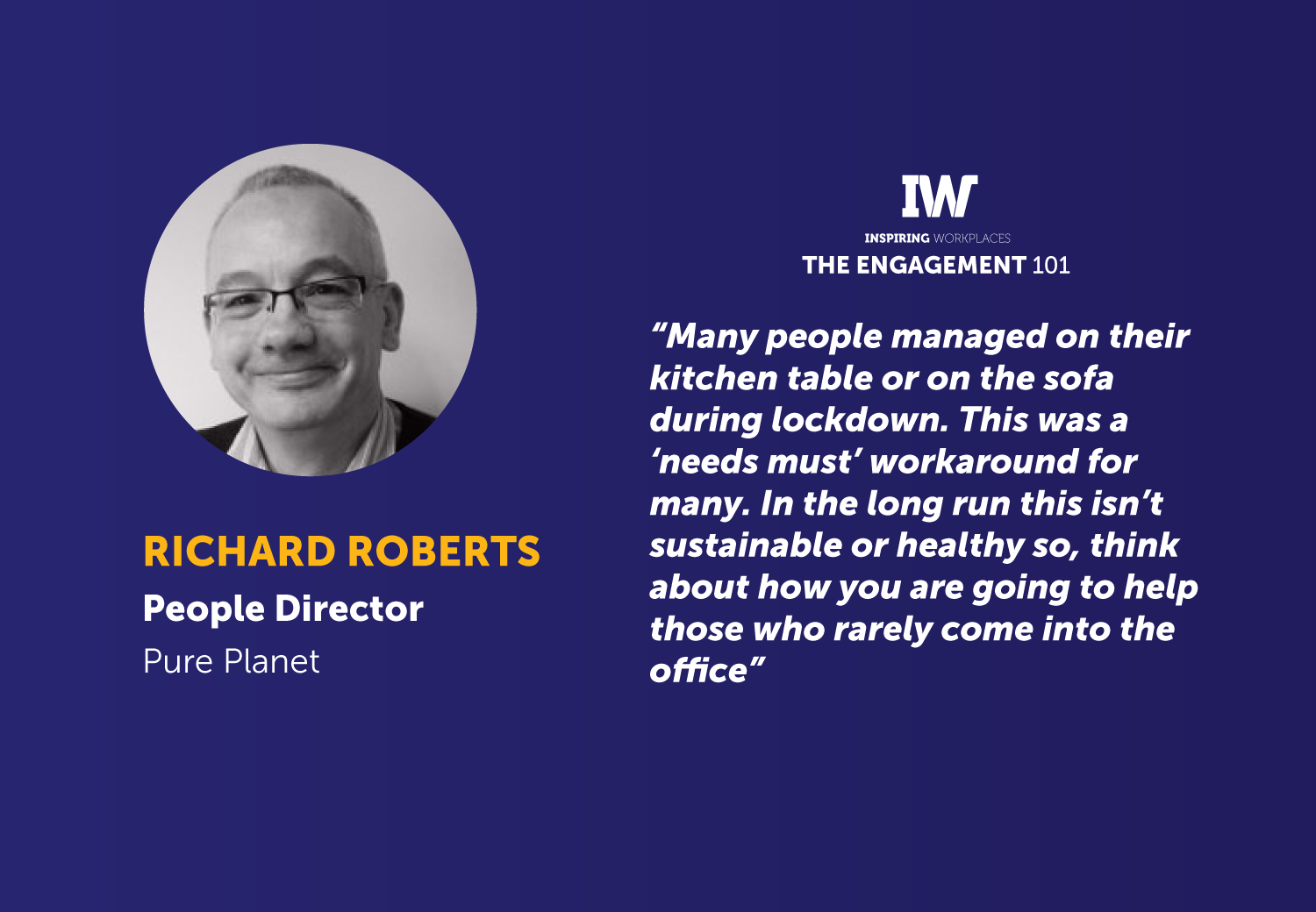
24th May 2021
How to return to the workplace (or not) – in a post covid world – Richard Roberts

This snippet is part of our Ebook How to return to the workplace (or not) – in a post covid world. Advice and suggestions from our Top 101 influencers. You can download the full eBook with all the advice here.
Richard Roberts, People Director, Pure Planet
I see the return to the office as a powerful engagement opportunity that we wouldn’t have had without the pandemic. The past year has made people think hard about what they really want from their employer and wider career. Many are seeking a more defined sense of purpose from their work. Organisations that deliver on purpose – like the sustainability message from my organisation, Pure Planet, have a great opportunity to get that across as they welcome people back. However, there must be a plan which needs to be flexible and agile as things will change. The key here is employee involvement. Some will be feeling a little removed, certainly nervous about not only re-joining colleagues face to face but the safety aspects of doing so. So, base your plan on asking your people what they think and what they need. What are their concerns? What do they need to see from you to want to go into the office? This is a great opportunity for an employer to show that they care and have put a lot of thought into the return to work process.
Lack of clarity is likely to be a major contributor to both employers – and employees struggling. In uncertain situations people want to know where they stand. The more clarity you can give, the smoother the process will be, and you’ll also help reduce stress levels. So, establish your expectations and communicate these regularly e.g., your approach to coming into the office “you have the choice to come in or you need to be in two days a week” etc. Leaders and line managers can make a huge difference here. Top down communication and understanding gives direction to the process and shows that it’s something everyone is going through – which can itself be engaging.
In terms of a model or process to adopt, there is no definitive answer here, other than choosing the right one that works best for your people. Some organisations have been very vocal about a 100% return to office based working – but is that really the ideal model for your people? Remember that many adjusted well to remote working and proved that it can work well. The old arguments for resisting home working won’t hold up now. What’s more, once you have given something it’s going to be a struggle to take it back without damaging goodwill. For this reason, the solution many employers are taking is a hybrid model, namely a mix of home and office based working. This presents the best opportunity to meet the needs of those who won’t want to spend 5 days commuting to an office. It also offers enough face to face contact to re-build relationships and establish new ones. However, your managers may be unfamiliar with managing a hybrid team so training would help them. Many people managed on their kitchen table or on the sofa during lockdown. This was a ‘needs must’ workaround for many. In the long run this isn’t sustainable or healthy so, think about how you are going to help those who rarely come into the office. For example, my organisation, Pure Planet, are giving everyone £250 to spend on a desk or chair if needed.

